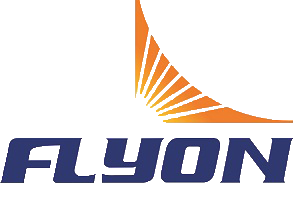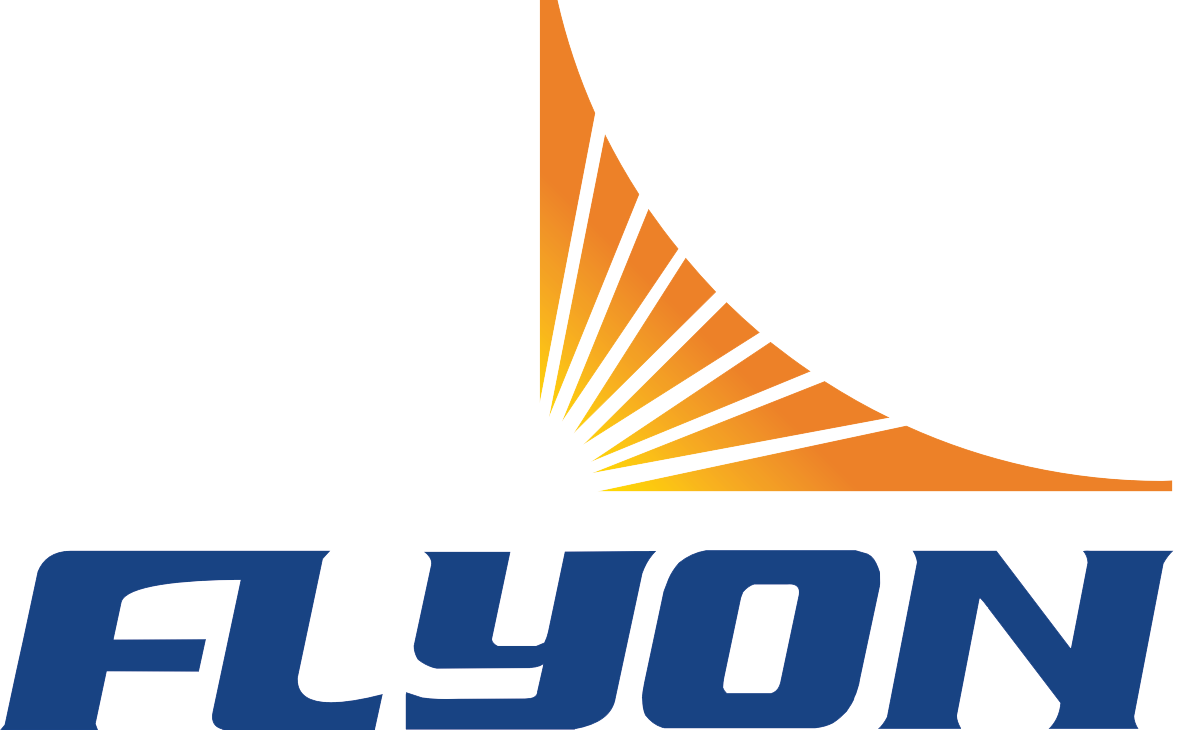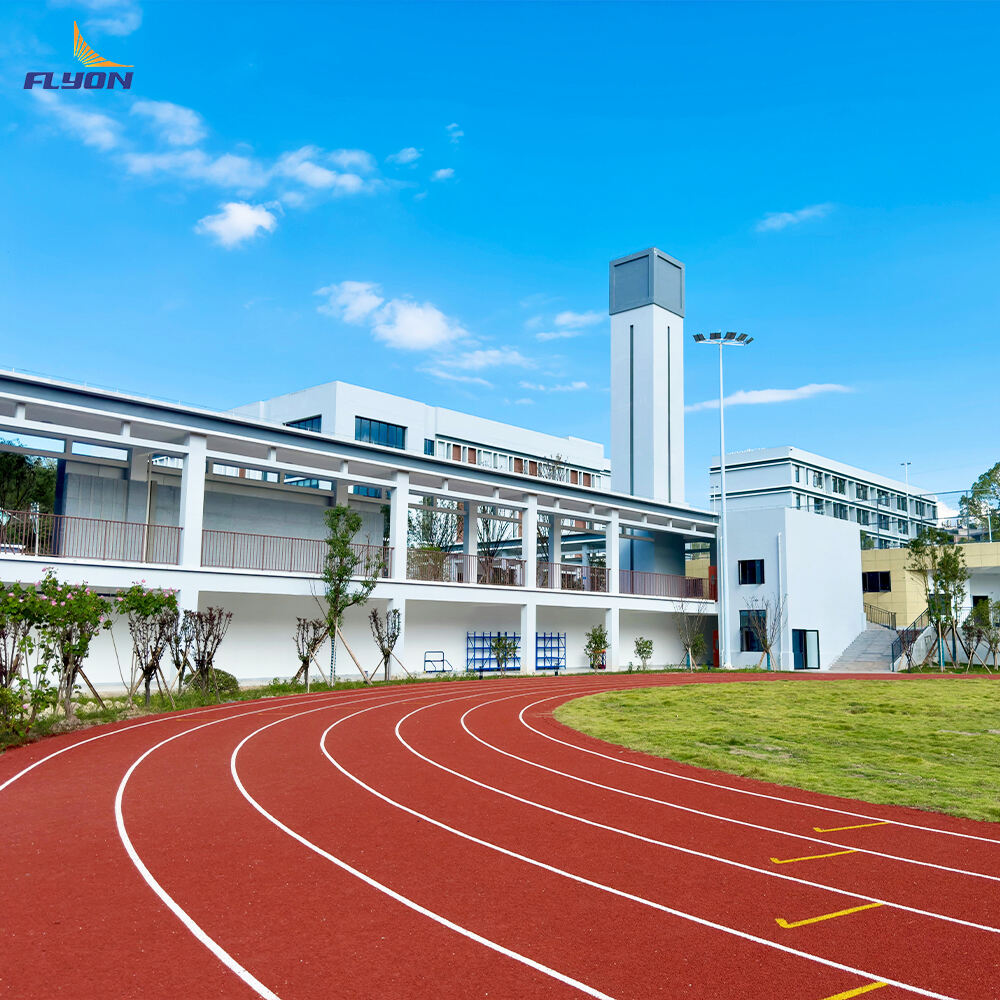합성 육상 트랙의 균열이 생기는 주요 원인
기상 조건으로 인한 표면 열화
기상 조건은 합성 육상 트랙의 열화에 있어 중요한 역할을 합니다. 강한 자외선과 같은 극단적인 날씨는 트랙 소재가 분해되게 만들 수 있으며, 집중 호우는 표면 침수와 침식을 유발할 수 있습니다. 또한, 영하의 온도는 트랙이 팽창하고 수축하게 만들어 균열을 초래할 수 있습니다. 한 연구에 따르면 극한 기후에 노출된 트랙은 온화한 기후에 있는 트랙보다 수명이 약 10~15년 짧은 것으로 나타났습니다. 이러한 요인들은 다양한 기후 조건에서 육상 트랙의 내구성을 높이기 위해 정기적인 유지보수와 보호 조치가 얼마나 중요한지를 보여줍니다.
집중적인 보행량과 과도한 사용 패턴
자주 열리는 행사 및 훈련 세션으로 인해 합성 트랙 표면에 특히 높은 수준의 부담이 가해지게 됩니다. 예를 들어, 청소년 육상팀이나 지역 육상 클럽은 경기와 연습을 위해 트랙을 집중적으로 사용하는 경우가 많습니다. 이러한 사용은 점진적인 마모를 유발하고 궁극적으로 균열로 이어질 수 있습니다. 여러 지역 대회를 정기적으로 개최하는 한 지역 트랙에서는 지속적인 사용과 행사 간 충분한 회복 시간 부족으로 인해 표면 손상이 발생하기도 했습니다. 이러한 영향을 완화하기 위해서는 적절한 일정 조율과 유지보수 관리를 통해 트래픽을 통제하고 트랙의 품질을 보존하는 것이 중요합니다.
부적절한 설치 및 기초 문제
불량한 시공 방법과 부적절한 지반 준비는 합성 트랙의 구조적 완전성을 심각하게 해칠 수 있습니다. 트랙이 제대로 접착되지 않았거나 지반에 불균일한 부분이 존재할 경우, 시간이 지남에 따라 균열이 발생할 가능성이 커집니다. 트랙 시공 전문가들은 표면의 내구성과 수명을 보장하기 위해 정확한 시공 기술이 얼마나 중요한지 강조합니다. 예를 들어 업계 전문가들의 조언에 따르면, 시공 과정 중 발생하는 작은 오류라도 예를 들어 표면이 고르지 않거나 접착력이 부족하더라도 이는 나중에 큰 수리 문제로 이어질 수 있습니다. 따라서 트랙의 조기 노후화를 방지하기 위해서는 고품질의 시공과 정기적인 점검에 투자하는 것이 필수적입니다.
합성 트랙의 균열 복구를 위한 효과적인 방법
표면 준비 및 청소 기술
합성 트랙의 효과적인 수리를 위해 적절한 표면 준비 및 청소가 매우 중요합니다. 작업은 먼저 송풍기나 청소 장비를 사용하여 이물질을 제거하는 것으로 시작되어야 하며, 표면이 오염물이나 느슨한 입자로부터 깨끗해지도록 해야 합니다. 다음으로 특수 세척제를 사용하여 기름, 그리스 또는 유기물질 등을 깨끗이 닦아내어 수리 재료의 최적 접착력을 보장해야 합니다. 잔류 습기를 무시하거나 올바른 세척제를 사용하지 않는 등의 흔한 실수는 피해야 하는데, 이러한 요소들이 수리 효과성을 저하시킬 수 있습니다. 유지보수 전문가들은 초기 단계에서 충분한 건조와 점검이 필수적이며, 조기에 수리 실패를 방지하기 위해 이를 강조합니다.
폴리우레탄 수지 주입 공정
폴리우레탄 수지 주입은 합성 트랙의 균열을 메우는 데 효과적인 방법으로, 날씨 변화를 견딜 수 있는 방수 밀폐 효과를 제공합니다. 이 공정은 균열에 수지를 주입하여 주변 표면과 결합하도록 팽창시킴으로써 내구성 있는 복구 솔루션을 제공합니다. 폴리우레탄 수지를 사용해 트랙을 복원한 시설들의 성공 사례가 다수 있으며, 이들 시설에서는 트랙 수명 연장과 유지보수 비용 절감 효과를 경험했습니다. 예를 들어, 여러 운동 경기장에서 수리 후 개선된 트랙 성능을 기록했으며, 수지가 트랙 구조물의 완전성을 유지하는 데 효과적임을 입증하고 있습니다.
기상 조건에 견디는 수리용 열융착
열 패치는 극한의 기상 조건에 노출된 합성 트랙에 특히 적합한 수리 방법입니다. 이 공정은 열을 가하여 수리 재료를 트랙 표면에 접착하여 견고하고 내후성이 뛰어난 패치를 만드는 과정입니다. 미국 스포츠 빌더 협회(ASBA)에서 권장하는 산업 표준을 비롯한 여러 산업 표준은 온도 변화에 강하고 추가적인 성능 저하를 방지하는 특성 때문에 특정 합성 표면에 열 패치를 사용하는 것을 권장합니다. 열 패치를 사용하면 시설에서 트랙의 수명을 연장하고 다양한 계절 조건에서도 높은 성능을 유지할 수 있습니다.
트랙 수명 연장을 위한 예방적 유지보수 절차
정기 청소 절차: 일일 청소부터 연간 고압 세척까지
러닝 트랙의 상태를 유지하려면 체계적인 청소 일정을 따르는 것이 중요합니다. 매일 쓸기 및 이물질 제거를 통해 유해한 잔여물이 축적되어 트랙 표면이 손상되는 것을 방지해야 합니다. 주간 브러싱은 먼지 입자를 제거하고, 연 1회 고압 세척을 통해 깊게 스며든 오염물과 잠재적 오염 물질을 효과적으로 제거할 수 있습니다. 연구에서는 이러한 정기적인 청소 작업이 트랙 수명 연장과 최적의 성능 유지에 필수적임을 강조하고 있습니다. 모범 사례와 일치하는 효과적인 청소 루틴은 마모를 상당히 줄여주며 수리 빈도를 낮추는 데 기여합니다.
트랙 가장자리 및 차선을 위한 이물질 관리 전략
탄력 있는 잔해 관리 전략을 수립하는 것은 트랙 가장자리와 차선이 손상되지 않도록 보호하는 데 매우 중요합니다. 낙엽, 먼지 및 이물질이 쌓이면서 안전 위험 요소가 될 수 있고 시간이 지남에 따라 트랙 품질이 저하될 수 있습니다. 정기 점검을 실시하고 친환경 송풍 도구나 청소 장비를 활용하면 잔해물을 효과적으로 제거하여 트랙 상태를 유지할 수 있습니다. 실제 사례에서 미흡한 잔해 관리로 인해 심각한 트랙 마모가 발생했으며, 이는 고비용의 대규모 수리를 초래하기도 합니다. 따라서 예방적인 잔해 관리는 안전하고 내구성 있는 트랙 환경을 유지하는 데 필수적입니다.
계절별 표면 점검 및 손상 평가
철저한 계절별 표면 점검을 수행하는 것은 균열과 손상을 조기에 발견하기 위해 중요합니다. 정기적인 점검을 통해 소규모 문제들이 중대한 손상으로 악화되기 전에 적시에 대응할 수 있습니다. 전문가들은 표면 상태를 정확하게 파악하기 위해 분기별로 평가 도구를 활용한 점검을 권장합니다. 이러한 예방적 점검은 업계 가이드라인의 지원을 받으며 효과적인 손상 평가 계획을 수립하는 데 도움이 되고, 궁극적으로 트랙의 내구성을 보장하고 유지보수 비용을 최소화합니다. 유지보수 일정에 이러한 점검을 통합함으로써 시설물은 트랙의 수명을 연장시키고 선수들의 안전을 확보할 수 있습니다.
인조 트랙 유지보수 일정 최적화
주간 대 월간 대 연간 유지보수 작업
합성 트랙의 상태를 최적화하려면 종합적인 유지 관리 일정을 수립하는 것이 매우 중요합니다. 주간 정비 작업에는 일반적으로 이물질 제거 및 먼지 축적 방지를 위한 간단한 청소가 포함되는데, 트랙 유지 관리 연구에 따르면 이는 필수적입니다. 이러한 정기적인 정비 작업은 트랙 표면을 안전하고 보기 좋게 유지하는 데 도움이 됩니다. 월간 정비 작업에는 트랙 표면의 경미한 손상이나 느슨한 부분을 검사하는 작업이 포함될 수 있으며, 연간 정비 작업에는 고압 공구를 사용한 정밀 청소를 통해 트랙 수명에 영향을 줄 수 있는 고착된 먼지를 제거하는 작업이 포함될 수 있습니다. 정비 기록 데이터는 정기적인 정비와 향상된 트랙 상태 사이에 높은 상관관계를 지속적으로 보여주며, 이는 체계적인 정비 계획의 효과를 강조합니다.
고속 유동 구역의 마모 패턴 모니터링
합성 트랙의 고주파 사용 구역에서 마모 패턴을 모니터링하고 문서화함으로써 심각한 손상을 예방하고 수명 연장에 기여할 수 있습니다. 육안 점검이나 디지털 모니터링 시스템과 같은 기술을 활용하면 트랙 관리자가 마모 경향에 대한 데이터를 수집할 수 있습니다. 실제 연구를 통해 마모 패턴 분석에 기반한 예방적 유지보수가 육상 트랙의 수명을 크게 늘릴 수 있음을 확인할 수 있었습니다. 예를 들어, 자주 사용되는 레인의 초기 마모 징후를 조기에 해결함으로써 향후 비용이 많이 드는 수리를 방지할 수 있습니다. 이러한 마모 패턴을 효과적으로 문서화하는 것은 과거 기록을 보존할 뿐만 아니라, 향후 유지보수 계획을 정확하게 세우는 데도 도움이 되어 트랙이 최상의 상태를 유지할 수 있도록 보장합니다.
지역 트랙 클럽 일정에 맞춘 유지보수 협조
지역 트랙 클럽의 일정과 트랙 유지보수 계획을 조율하는 것은 일정 충돌을 방지하고 유지보수 효율성을 높이는 데 매우 중요합니다. 트랙 관리 당국과 지역 클럽 간의 협력을 통해 정상적인 사용과 필요한 관리를 균형 있게 병행할 수 있습니다. 예를 들어, 한 연구에서는 지역 트랙 클럽의 비수기와 유지보수 활동 일정을 맞추는 것이 운동선수들의 일상에 방해가 되지 않으면서도 충분한 시간 동안 점검 및 수리를 수행할 수 있음을 강조했습니다. 전문가들은 클럽 대표자들과 소통 채널을 구축하여 시설 점검 및 유지보수 작업을 이용률이 낮은 기간에 시행함으로써 모든 이해관계자들에게 이익이 되는 협력적 환경을 조성하고 경기용 트랙을 최상의 상태로 유지할 것을 권장합니다.
전문가 수리 서비스 대 직접 수리 유지보수
공인 트랙 건설업체(CTB)에 연락해야 할 시기
인증된 트랙 건설업체(CTB)와 같은 전문 서비스를 언제 이용해야 하는지를 아는 것은 안전하고 고품질의 육상 트랙을 유지하는 데 매우 중요합니다. 작은 수준의 수리는 이물질 제거나 미세 균열 보수와 같이 DIY 방법으로 해결할 수 있지만, 심각한 문제는 반드시 전문가의 개입이 필요합니다. 예를 들어, 트랙의 기층이나 배수 시스템과 관련된 복잡한 문제는 전문가의 조언 없이 처리해서는 안 됩니다. 인증된 건설업체는 안전성뿐 아니라 고급 트랙 소재와 설계에 대한 전문 지식을 바탕으로 오래 지속되는 품질을 보장합니다. 전문가들은 특히 전문 기술이 요구되는 작업에서는 DIY 방식으로는 얻을 수 없는 신뢰성을 인증된 건설업체를 통해 얻을 수 있다고 강조합니다.
시설 관리자를 위한 필수 유지보수 도구
러닝 트랙 유지보수를 담당하는 시설 관리자는 비용 효율적이고 효과적인 DIY 유지보수를 위해 반드시 필요한 도구들을 갖추고 있어야 합니다. 이러한 도구로는 잔디나 나뭇잎과 같은 이물질을 제거할 수 있는 송풍기, 깊은 세척에 사용할 수 있는 고압 세척기, 작은 균열 보수에 사용되는 실런트 자재 등이 포함될 수 있습니다. 기본적인 도구 외에도 전문가들은 습도 측정기를 상비하여 수분 함량을 주기적으로 점검하는 것이 중요하다고 강조합니다. 과다한 수분은 흔히 발생하는 문제이기 때문입니다. 이러한 필수 도구들을 간과할 경우 예상치 못한 손실이 발생할 수 있으며, 적절한 장비에 투자함으로써 심각한 손상으로 인한 고비용 수리 비용을 절감할 수 있을 뿐 아니라 트랙의 안전성과 사용 가능성을 보장할 수 있습니다.
전문 재포장 작업의 비용-효과 분석
비용 대비 효과 분석을 통해 전문가가 트랙 표면을 재포장하는 것이 장기적인 안전성과 품질을 고려했을 때 DIY 유지보수보다 실제로 더 나은 선택임을 알 수 있습니다. DIY 방식이 일시적으로는 저렴해 보일 수 있지만, 전문가가 재포장한 트랙의 내구성을 따라가지 못합니다. 예를 들어, 교육 시설과 관련된 사례 연구에서는 전문가가 표면을 재포장한 트랙이 훨씬 오랫동안 견고하게 유지되어 전체 유지보수 비용이 줄어드는 경향이 자주 나타납니다. 재정적으로 볼 때 전문가를 고용하는 초기 비용이 높아 보일 수 있으나, 이는 향후 수리 필요성이 낮아지고 선수들의 안전성이 향상됨으로써 상쇄됩니다. 따라서 표면 재포장을 위해 전문 서비스에 투자하는 것은 특히 트랙의 수명 연장과 사용자 만족도 향상을 고려할 때 정당화되는 경우가 많습니다.
 EN
EN
 AR
AR
 FR
FR
 PT
PT
 RU
RU
 ES
ES
 BG
BG
 HR
HR
 CS
CS
 DA
DA
 NL
NL
 FI
FI
 DE
DE
 EL
EL
 HI
HI
 IT
IT
 JA
JA
 KO
KO
 NO
NO
 PL
PL
 RO
RO
 SV
SV
 CA
CA
 TL
TL
 ID
ID
 SR
SR
 SK
SK
 UK
UK
 VI
VI
 HU
HU
 TH
TH
 TR
TR
 MS
MS
 AZ
AZ
 KA
KA
 BN
BN
 LO
LO
 MN
MN
 MY
MY
 UZ
UZ


